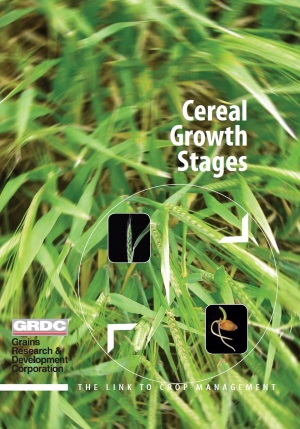Cereal growth stages
Cereal growth stages
Published: 30 Sep 2005
This guide examines the role of disease control and canopy management in optimising cereal production in south east Australia. It is designed to give growers greater confidence in identifying the important cereal growth stages and how they relate to the principles of disease management and canopy management.
Key points
- The Zadoks Growth Stage key does not run chronologically from GS00 to 99, for example when the crop reaches 3 fully unfolded leaves (GS13) it begins to tiller (GS20), before it has completed 4, 5, 6 fully unfolded leaves (GS14, 15, 16).
- It is easier to assess main stem and number of tillers than it is the number of leaves (due to leaf senescence) during tillering. The plant growth stage is determined by main stem and number of tillers per plant e.g. GS22 is main stem plus 2 tillers up to GS29 main stem plus 9 or more tillers.
- In Australian cereal crops plants rarely reach GS29 before the main stem starts to stem elongate (GS30).
- As a consequence of growth stages overlapping it is possible to describe a plant with several growth stages at the same point in time. For example a cereal plant at GS32 (2nd node on the main stem) with 3 tillers and 7 leaves on the main stem would be at GS32, 23, 17, yet practically would be regarded as GS32, since this describes the
most advanced stage of development.
Note: After stem elongation (GS30) the growth stage describes the stage of the main stem, it is not an average of all the tillers. This is particularly important with fungicide timing e.g. GS39 is full flag leaf on the main stem, meaning that not all flag leaves in the crop will be fully emerged.
Download PDF
Region: National
ISBN: 1-875477-40-3 (print)
GRDC Project Code: SFS 00006,

